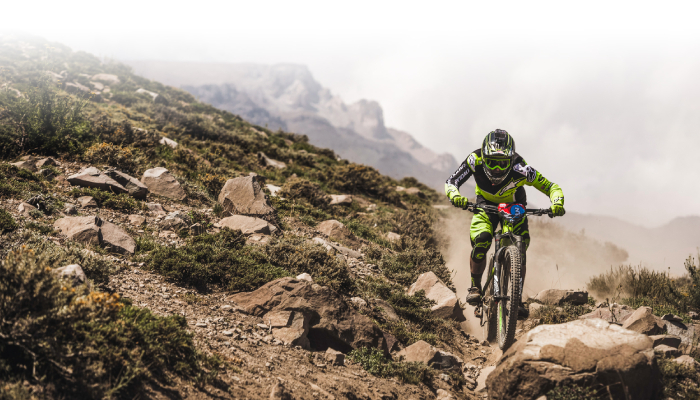Tips To Make You An Expert In Downhill Mountain Biking

How Do You Select The Right Mountain Bike For Your Mountain Biking Activities?
September 28, 2020
Mountain Biking For Fitness: Making An Arduous Sport An Enjoyable Workout
October 25, 2020Downhill Mountain Biking: Is it as easy as it looks?
There are a separate set of fans who thrive on the adrenaline rush that downhill mountain biking gives them. They are those bikers who consider uphill biking as boring and less of a challenge! Downhill mountain biking is all about balance, and the disciplined use of speed, combined with gravitational force. It is a sport that demands serious skill and practice. Although professional bikers make it look easy, there is actually a lot going on in their minds, bodies and the machines.
Here are some top tips that professional bikers use for downhill biking.
Tips To Perfect The Art Of Downhill Biking
Eyes forward, please!
In downhill biking, there is absolutely no room for distractions. Yes, the terrain will be tricky, complicated and unpredictable. But bikers ought to tune themselves to their surroundings and keep their eyes glued to the path in front of them. A deviation of the line of sight could result in a change in the direction of the bike itself. Keeping your sight focussed will keep you ready to negotiate unexpected turns or sudden drops.
Practice your braking prowess
As a rule of thumb, it is best not to hit the brakes unless you are travelling in a straight line. Braking in a curve will most likely throw you off balance. Amateur downhill bikers need consistent practice sharpening their disciplined use of the brakes. We suggest you kickstart your practice on an easy slope with plenty of run-off space. Hit the braking line at least 5 or 10 meters after the start line. The trick here is to use only the front wheel to brake, without locking the wheel up. Continuous practice will help in using the brakes effectively to bring the vehicle to a stop without skidding.
Master the drop-offs
No downhill biker can avoid the drop-offs. This is actually the most exciting and daunting component of downhill biking. Conquering the drop-offs requires plenty of technique and skill:
The prime aim is to keep the bike parallel to the landing base. This feat can be achieved by keeping the core engaged and straightening the arms to push downward and forward through the pedals.
When you approach plain ground, steady your balance by positioning yourself above the bike.
Allow your legs to absorb the shock and realign your position to tackle the next challenge.
Perfect Body Position For Downhill Mountain Biking
A downhill mountain biker can call himself a pro only if he has mastered the act of balancing body positions. As a key skill to downhill biking, body positions are all about finding stability while on the move along with the bike. Here’s what a perfect position will look like on a seasoned biker:
- Bracing of the feet against the pedals by dropping the heels.
- A slight bend of the arms and knees to act like extra suspension.
- Eyes looking straight ahead at the trail.
- Hips positioned to balance the pull of gravity.
- Lowering of the chest and positioning the chin over the stem.
- Sturdy grip on the handlebar with an ever-ready grip on the brakes.
Tips to take your downhill mountain biking skills to the next level
The most sensible thing to do with uphill or downhill mountain biking is to take it up with a seasoned coach. And the next sensible thing is to practice in a local biking park that has trail settings with various levels of difficulty. Patience is a virtue that all amateur bikers must possess. Give yourself at least 6 months to a year to practice, get the hang of handling your bike and to get to know your bike before you head out to the real biking trails. Bikers ought to know the basics of first aid that will come in handy at the most unexpected moments.




